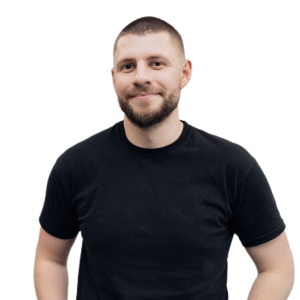A Global Brand From Day One: the Core Idea, Benefits, and Features of MyTelescope
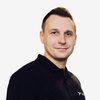
Oleg Dats
Co-Founder & CEO at TechMagic. Leading a full-stack development company that scales engineering teams and builds software products from scratch. Passionate about AI and innovations.

MyTelescope is a project of Rodrigo and his friend Fréderique, and we have the pleasure to be their tech partner in this journey. How it started and how it's going – directly from the founder.
Creating a successful product and turning it into one of the market top players requires an understanding of your audience, its requests, and needs. It's essential to know how people make choices and what motivates them to go for your product among all other options. And yet, you need to understand its value and believe in what you do.
Rodrigo Pozo Graviz, CEO and founder of MyTelescope, has had 15 years of experience in marketing when he started his business. It is a case when someone with great knowledge and experience in a field decided to use them for creating something amazing.
We had the pleasure to become Rodrigo's partner in this project and took our chance to ask him a few (a lot, actually) questions about the product, the idea, prospects, problems, and pitfalls.
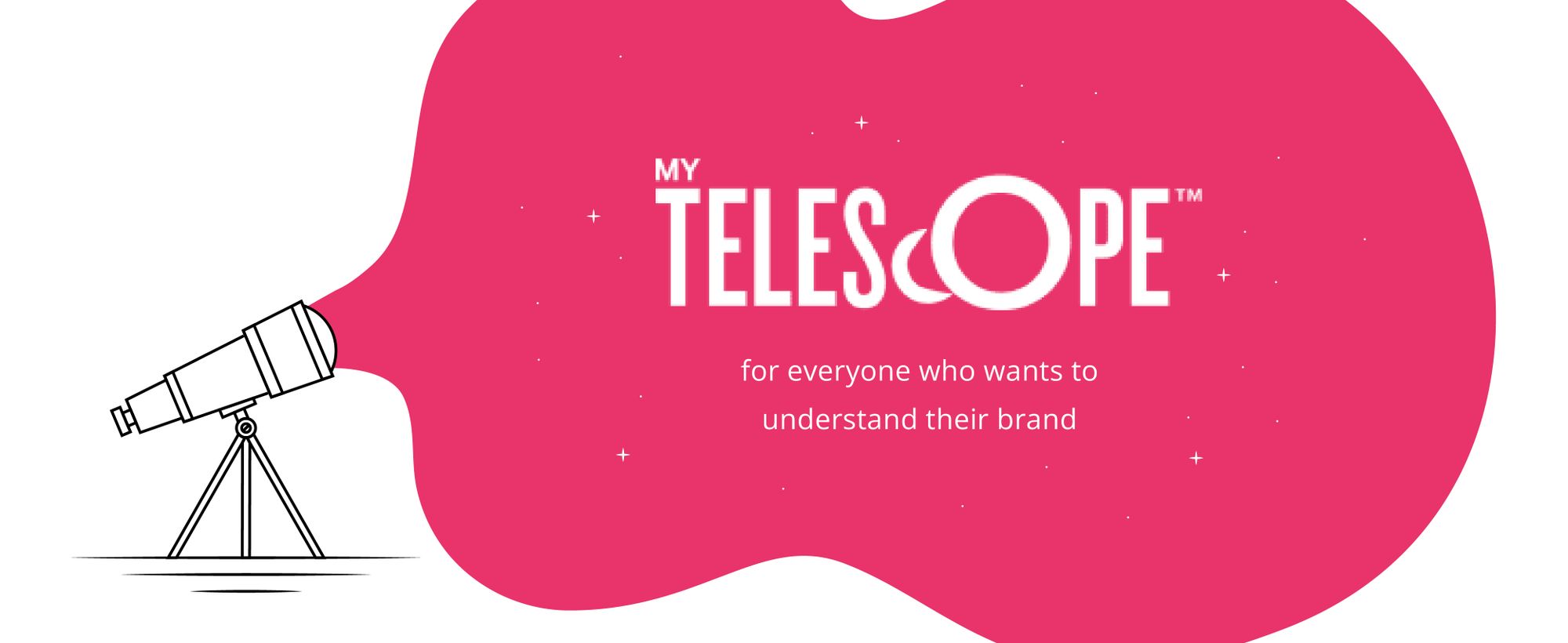
We started to work with Rodrigo since the launching of MyTelescope. His main idea was to step away from working as an agency and create a product that would provide a comprehensive analysis of audience behavior — to help marketers understand how it behaves and why it behaves like this.
Rodrigo: The challenge we saw in the market was that many people don't have good data to get insights into their market. So we wanted to create a product available and accessible for everyone who wants to understand their brand, insights, general market trends, and so on.
How It Started
MyTelescope is a partner project of Rodrigo and his friend Fréderique. Initially, they built a team that consisted of creatives like marketers, designers, copywriters, and brand analysts — 80%. For now, the team looks completely different, and almost 100% of employees are technical specialists.
Rodrigo: And then we have been fortunate to work with you guys so that we have an extended team.
When we ask Rodrigo about challenges at the very beginning of their path, he singles out two main ones.
First: when you start to build the technology, it comes to a point where you have to freeze the product and start moving from there and not change what you're making. So you don't have a moving target. And it was challenging.
Second: You need to understand how to proceed with a huge amount of data. You should pay significant attention to this because the modern user is impatient, and the marketers appreciate time and information received on time. Working with such a large amount of data may take several hours to process and generate a report. You need to be able to handle it.
What's the Coolest Thing About Your Product?
What people usually want to know first is what's the primary value of MyTelescope and what makes it attractive for users. The principal value is not the ability to understand what people are looking for because there is nothing new in it. It's seeing and understanding why they do that. This is the most helpful and valuable information for marketing specialists.
With MyTelescope, you can see on a whole level what people are doing. And you can also see from sentiment and social media points of view what people are writing (posting) about. And from that, you can create a sentiment analysis that can tell you if the interest created is positive or negative. That's the key feature that people love about the product.
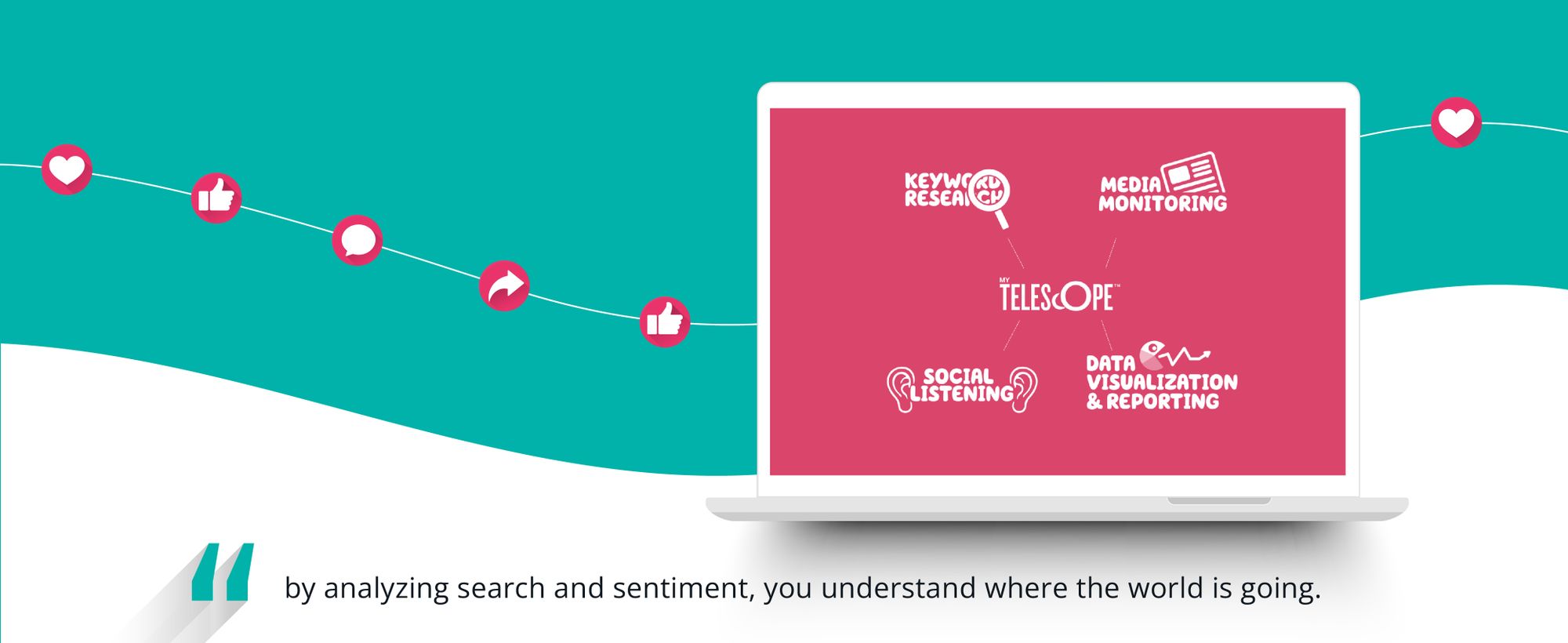
Rodrigo: If you're working with understanding the world and getting insights, you first want to know what's happening with a trend, and then you want to see why that trend is happening?
Rodrigo compares working with this data with creating the universe. You can start to understand, at least from a digital point of view, what's happening in the digital landscape.
Rodrigo: People are so much more on the digital channels now. Not only here in Sweden or Ukraine or London; everybody with a mobile phone. So by analyzing search and sentiment, you understand where the world is going.
Let's Talk About the Product In Detail
By this time, the question arises about the data sources for such a data-heavy project. Many companies keep this information secret or are simply reluctant to share it.
MyTelescope is exceptionally open about data because it's about making sense of customers' data sources. But the primary sources are in two buckets. You have search data from Google, Amazon Pay Store, and sentiment data from social media.
Those are different user forums, blogs, etc. And there are data sources they buy or get as a result of collaborations with third parties.
Widgets, Dashboards, Reports
As soon as you start using MyTelescope, your eyes catch numerous visual components. We asked Rodrigo how this widget set was created. It's also interesting whether they have a primary appearance, or, maybe, they have changed and how.
Rodrigo: When we started building the product, it was based on how we saw the world and how you should be reporting towards a brand or trends. But now, as we're getting more and more users into the system, it's based on requests.
You have to have a purpose for what you want to know, and you have to start grilling by looking at it top-down. So you get all the data and look at it from different angles. These widgets and graphs are those different angles. So if someone says they want to understand their brand's reputation trend, they expect the visuals to analyze data based on those requests.
So each widget represents a question the user might have. That's how they are designed.
You Don't Ask for Data; You Get It Yourself
MyTelescope is an impressively informative tool. The data is well structured and well presented. Here it's interesting who sets the workflow? Does the app itself explain how to use it properly and what steps to take, or is it up to the marketing managers, considering that the users are primarily large companies.
Rodrigo: Users don't want anyone to do it for them because they're more used to different digital tools. But if you think about my gen Y, it's used to emails and so on. But all of these strategic tools have not existed until now. So I think it's a bit of a transformation on the market as well, but we're being part of driving.
What About the Competition?
MyTelescope's main competitors are consultants. Those, the companies that collect and analyze data and obtain recommendations for their use. At the same time, Rodrigo has a strong opinion that consultants can be their partners. How exactly? They can use MyTelescope for data collection and then present the results to customers.
There will always be a percentage of those who prefer to pay and receive a ready-made presentation via email.
Another vast and powerful competitor is Google Trends. First of all, it is free. In the second — it's mega-popular and authoritative. However, it doesn't give you a chance to dig deeper and get that kind of data that MyTelescope offers.
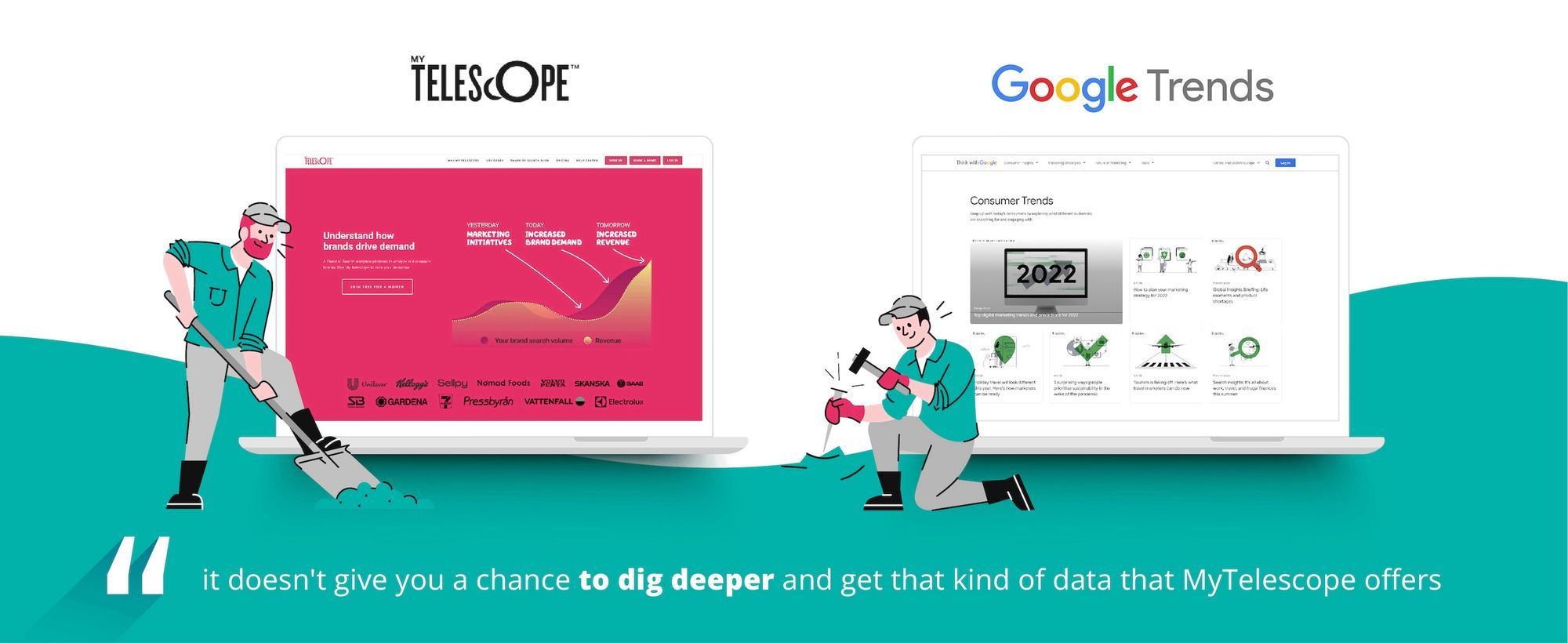
Rodrigo: You can understand [from GoogleTrends] what's happening, but you don't know why it's happening. That's why we give away the share of search metrics for free because we know it's a free metric out there. What you're buying from us is understanding where the trend is going and why it's going there.
And, of course, there are competitors such as Semrush — a top-rated service that offers similar services but does not combine them with search data.
Marketing and Sales Challenges
The next question is how the company finds its customers, contacts them, turns leads into customers and partners.
Rodrigo: How do we attract customers? Basically, through leadership, PR, AdWords buying, search terms, webinars, etc.
That's complex work to make people understand what we're doing and inspire them to get into the product. And then, when they're in the product, we have a team that educates, helps, and inspires you. Our firm belief is that when you're ready to buy, you will buy it.
If you love the product, you don't want to stay aside. We do it for business to business because we believe that company... it's still people. And they want to get inspired. They want to have fun. They want to have stuff that makes them feel better after the job.
One of the key indicators of product quality is how long the customer stays with you. When we ask Rodrigo about this, he points that the platform is new; it's only a year old. But, from another point of view, a year is enough for the first conclusions. Most of MyTelescope users try once and stay. Still, to make adequate and accurate conclusions based on this indicator, you should wait 3-5 years and analyze data.
Rodrigo: The main factor that makes people want to stay is history. Our vision is that since you build your personalized dashboard, you develop your unique personal data sets and vision. You will remain with the product or a company as long as you are working.
The product is innovative; it's a brand new category on the market. Accordingly, it's challenging to sell it. MyTelescope offers its users to explore how the market behaves and develops by analyzing search data. Quite often, people don't understand what it means and what they get from this.
Rodrigo: We have between ten to a hundred new users every month coming into the tool. However, they come because they want to know what it is and how it works; they are curious!
And at this point, our main task is to turn this interest into a desire to buy a product. It means to make people love your product. And this, in turn, means making this product an absolute hit. It's the way from "What's that?" to "I want it!"
A Global Brand From Day One
The starting point in building the market was Sweden. It was a very successful start. It showcases that customers need and desire this product and are ready to buy and use it. Accordingly, Rodrigo and his team went further and shifted their focus to the United States and the United Kingdom. Since the company was created as a global brand from the beginning, it was worth working on the countries where most of the target companies are located.
Rodrigo: We have an idea that the legacy companies like Unilever, Kellog, Procter & Gamble, and similar need to close the funnel gap. They need to understand what's happening between the moment they produce the product and the moment customers get it right. And now, after many changes in privacy and cookie laws, you can see that.
On the other hand, smaller companies also receive tons of information regarding brand behavior. For the MyTelescope team, they are precious users. They explain, by their example, where to start and how to move, what methods to use, how to build and develop a brand. Because all and everything in this world has brands.
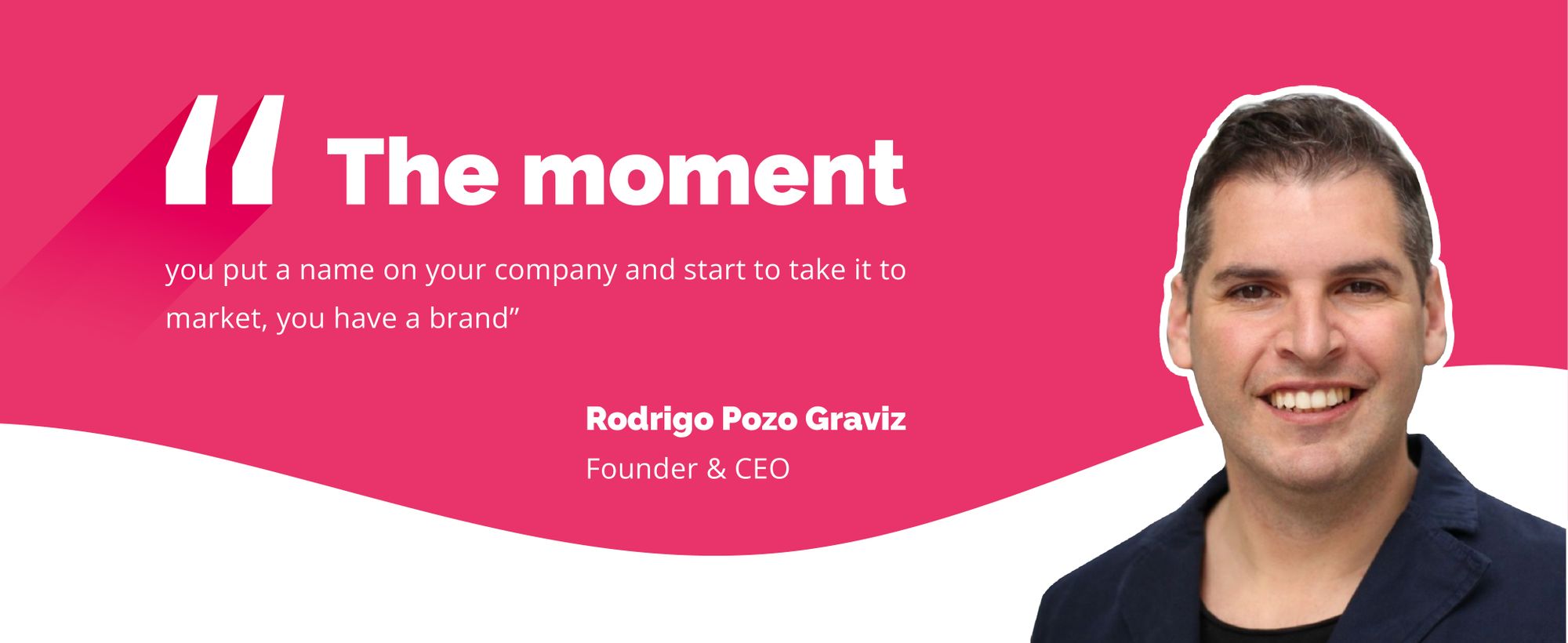
How to Sell to the Enterprise?
Another question regards the use of the platform by companies with several offices in different countries. Here Rodrigo highlights word of mouth and reputation as critical points and goals.
Rodrigo: Let's say I work at Adidas in Sweden. The chance of me accepting data from someone from Adidas in Germany is more significant than from outside. First of all, you get a warm intro. So that's the whole idea that we have: to create as many warm interests as possible and build a community.
Ready For Use Data
The thing with actionable insights is having purposes and understanding them. And that's something no one can figure out for you. Ask yourself what you want to know? Why do you want to know it? How are you going to use this knowledge? What is your final goal?
Rodrigo: Let's say I use MyTelescope to understand brand health. It means I have a purpose. I explore my brand and compare it to other ones. And I see that I have a problem.
The trend curve is going negative. Why? Because people are not happy with the price offered, they don't like the communication, the product itself, etc. It's not pleasant information, but it's great to get it and learn from it.
In this way, the marketing manager can understand the problem and address it to the right people. Because in most cases, the marketer is the final point in solving problems like this. It is the most outstanding value that data gives and that people often forget about for some reason.
Also, it helps you to understand how to build the subsequent campaigns, what to offer, how people's wishes and tastes change, which queries, and which characteristics become more common.
Rodrigo: People forget when working with a data-intensive company that the most challenging but fundamental part is understanding how to work with the data in place. And that's been a colossal job finding ways to organize it in a way that makes sense and is easy to scale over time.
Look At the Future
Near the end of our dialogue, we ask Rodrigo about plans. Regarding the product, first of all: how they plan to improve it, to advertise, etc.
The product is planned to become more intuitive and easy to use; that's the first challenge. Another one is a perspective of working with massive amounts of data and the desire to "befriend with time." After all, the processing and structuring of these data are time-consuming.
Rodrigo: We have some technical issues since it takes time to get data. How can we tell people that it's okay and takes time? But the reason is that we're creating a unique data set for every user.
As for the next year, the company's focus is shifted towards the United States and building a commercial presence there. Quite a motivating factor for finding solutions to tech challenges quickly:)
The cherry on the top: we asked Rodrigo to share some advice from his experience and expertise for the brand directors and chief marketing officers. What should they look at next year, what to follow, etc.?
Rodrigo: I think the biggest challenge for all marketers these days is how to look at performance marketing, and how to make sense of the longer-term perspective, the totality of the brand, communication. To realize it, we need to understand our consumers and talk their language.
So, without a doubt, I can say that search analytics will be impressively crucial in the following years because it's a way of closing that gap.



 Software Development
Software Development
 Security Services
Security Services
 Cloud Services
Cloud Services
 Other Services
Other Services
















 TechMagic Academy
TechMagic Academy
 linkedin
linkedin
 facebook
facebook
 twitter
twitter




